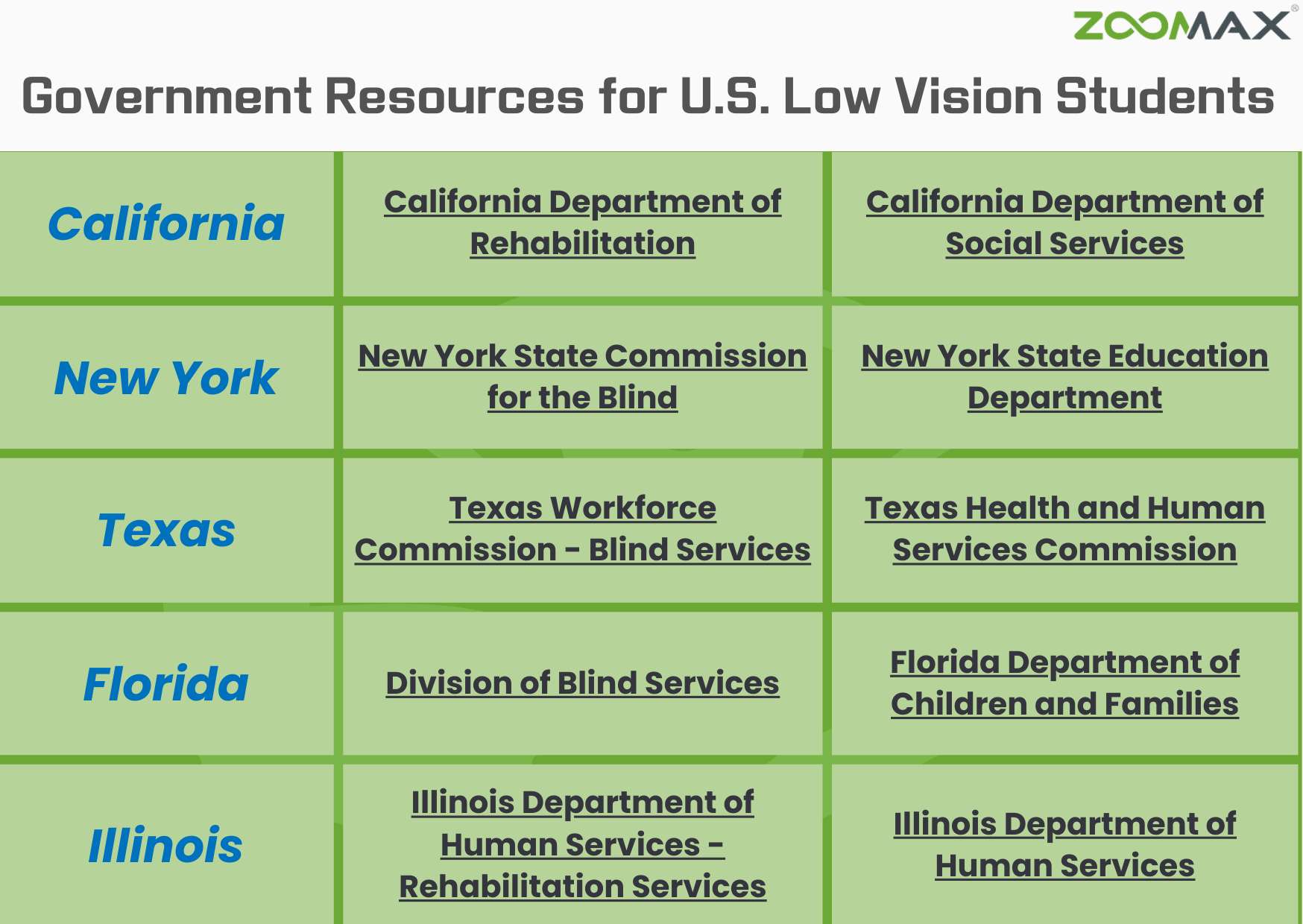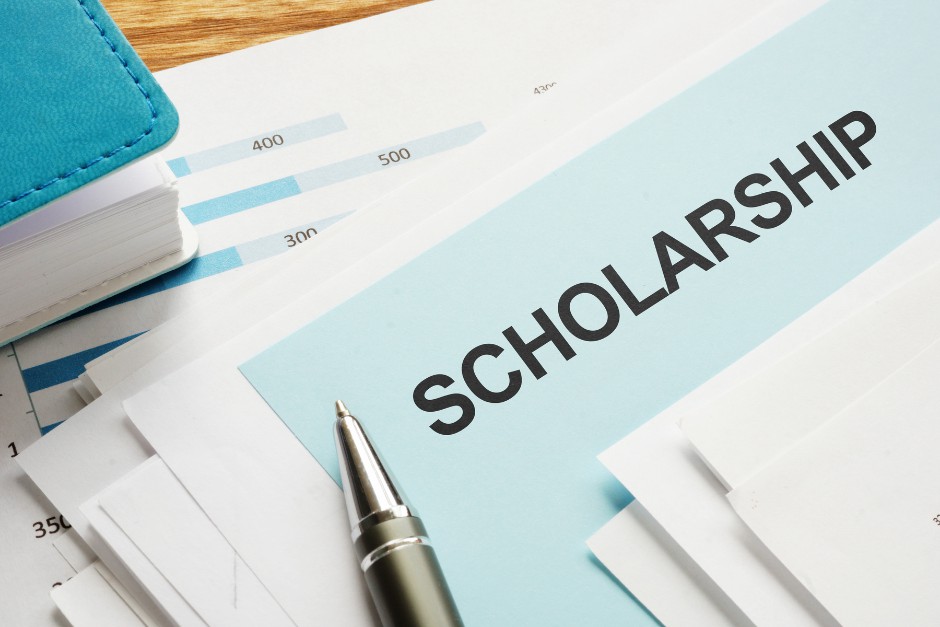Time flies, winter vacation ends rapidly. Are you ready to go back to school for the first semester in 2024? Students sometimes feel puzzled about how to improve their learning efficiency, especially for those students with low vision situation. Therefore, some study techniques are becoming particularly essential. Read on to make your low vision preparation for the new back-to-school season!
Preparing for the Academic Journey
When preparing for the new academic journey, it is crucial to understand the unique challenges that low vision students may meet. These challenges include difficulties in accessing visual information, such as text on a blackboard, slides, or printed materials, as well as navigating physical spaces on campus. However, these are also common situations that students need to experience every day at school.
 Time management in study somehow is another challenge for students with visual important as developing strategies for efficient time management in academic tasks requires more abilities and patience. Furthermore, social interaction can also pose challenges, including issues related to limited eye contact or non-verbal cues and the need for additional time in processing information. Recognizing and addressing these challenges is crucial for effective preparation for the new semester in 2024.
Time management in study somehow is another challenge for students with visual important as developing strategies for efficient time management in academic tasks requires more abilities and patience. Furthermore, social interaction can also pose challenges, including issues related to limited eye contact or non-verbal cues and the need for additional time in processing information. Recognizing and addressing these challenges is crucial for effective preparation for the new semester in 2024.
To overcome these learning challenges, exploring accessible learning tools and technologies becomes paramount. For instance, utilizing audiobooks and podcasts as alternatives to traditional reading materials, or exploring e-texts and digital resources customizable for different reading preferences, can all help low vision students access learning knowledge as much as possible.
Adaptive technologies, such as screen readers, video magnifiers, or speech-to-text applications, play a significant role in enhancing accessibility in various learning tasks. Screen readers, for instance, excel in reading digital text aloud, while magnification software and devices enhance visibility for those with visual impairments. Speech-to-text applications convert spoken words into written text, providing convenience for note-taking and writing assignments.
Navigating Campus Life with Low Vision
Navigating campus life with low vision involves proactive steps and collaborative efforts to ensure a smooth and inclusive academic experience. Here are key aspects to consider for both students with low vision and schools:
Pre-Enrollment Exploration
 Before the school year begins, low vision students can use handheld electronic magnifiers to explore the campus environment in detail. It’s quite helpful for them to observe key features of the campus in advance such as the location of classrooms, lecture halls, restrooms, and common areas. Also, pay particular attention to the layout of classrooms, noting the arrangement of desks, podiums, and any potential obstacles.
Before the school year begins, low vision students can use handheld electronic magnifiers to explore the campus environment in detail. It’s quite helpful for them to observe key features of the campus in advance such as the location of classrooms, lecture halls, restrooms, and common areas. Also, pay particular attention to the layout of classrooms, noting the arrangement of desks, podiums, and any potential obstacles.
Don’t forget to identify and memorize navigational landmarks, both indoor and outdoor, to enhance spatial awareness. This includes recognizing features like staircases, elevators, and specific buildings. Knowing the physical spaces where the academic activities take place is able to reduce the risks of collision for those with visual impairments.
Creating an Inclusive Campus Environment
Schools can focus more on the implementation of accessible signage with large-print letters and tactile markers. These modifications enhance wayfinding for low vision students by providing clear directional information. Lighting conditions matter to those with vision loss as well. Properly illuminated pathways and spaces contribute to a safer and more comfortable environment.
Supportive Services for Low Vision Students
 From the perspective of professors, it’s necessary to ensure that all course materials are provided in accessible formats. This may include electronic textbooks compatible with screen readers, enlarged print, or audio descriptions. Meanwhile, offering training sessions for low vision students on how to effectively use assistive technologies available on campus could empower them to maximize the benefits of tools such as screen readers or navigation apps.
From the perspective of professors, it’s necessary to ensure that all course materials are provided in accessible formats. This may include electronic textbooks compatible with screen readers, enlarged print, or audio descriptions. Meanwhile, offering training sessions for low vision students on how to effectively use assistive technologies available on campus could empower them to maximize the benefits of tools such as screen readers or navigation apps.
Furthermore, establish open communication channels between low vision students and professors, ensuring the needs of visually impaired students can be promptly addressed. Please encourage low vision students to communicate their specific needs confidently so they can receive tailored support. Other classmates can also provide support for those with visual impairments, which not only facilitates the sharing of tips and strategies for academic success but also builds an inclusive study environment in the classroom.
In conclusion, by proactively exploring the campus, optimizing the campus environment, and fostering collaboration between students and schools, the journey of low vision students through campus life can be made more accessible and colorful. With all these preparations in place, students with vision loss are definitely ready to welcome the new semester in 2024 with confidence and expectations!
Government Resources for U.S. Low Vision Students
Accessing government resources is vital and useful for low vision students in the United States seeking educational and financial assistance. Let’s see some federal resources and financial aid options in the following. Additionally, here is information on financial aid and scholarships provided, covering all American low vision students.
- California:
California Department of Rehabilitation: Provides vocational training and employment support for the visually impaired, promoting their career development through assistive technology and adaptive services.
California Department of Social Services: Ensures a range of social services and welfare programs, providing social support for low vision students during their educational journey.
- New York:
New York State Commission for the Blind (NYSCB): Provides vocational rehabilitation, independent living skills training, and adequate educational resources to enhance the career and life quality of visually impaired residents.
New York State Education Department: Offers extensive educational support, including special education services, ensuring adaptive academic assistance for low vision students.
- Texas:
Texas Workforce Commission – Blind Services: Focuses on providing vocational rehabilitation and employment services for low vision students to enhance their participation in the workforce.
Texas Health and Human Services Commission: Offers social services, medical assistance, among other welfare programs, supporting the comprehensive development of low vision students.
- Florida:
Division of Blind Services (DBS): Provides rehabilitation, independent living, and educational support for blind and visually impaired individuals, helping them integrate into society through personalized services.
Florida Department of Children and Families: Offers various family and social services, ensuring holistic support for low vision students.
- Illinois:
Illinois Department of Human Services – Rehabilitation Services: Provides vocational rehabilitation services, including technology training and job placement assistance.
Illinois Department of Human Services: Offers diverse social services, providing additional support for low vision students to promote their overall development.

State-Specific Scholarships and Aid
University of California System Scholarships: Various scholarships available to California residents through the university system, supporting academic pursuits of low vision students.
New York State Higher Education Services Corporation (HESC) Scholarships: Multiple scholarships available for New York residents, assisting low vision students in managing tuition and living expenses.
Additional Financial Support Programs
Federal Work-Study Program: Offers part-time employment opportunities for eligible students, including those with disabilities.
Social Security Administration: Low vision students with limited income may qualify for supplemental security income (SSI), providing financial assistance for basic needs.
Lifetime Learning Tax Credit: Offers tax credits for eligible students, including those pursuing undergraduate and postgraduate education.
 As the new school year in 2024 is about to begin, we encourage low vision students to actively prepare, make good use of assistive technology, bravely put forward demands to schools and teachers, and take full advantage of government resources. By building sufficient learning confidence, all visually impaired students can create a positive academic environment to embrace the new semester!
As the new school year in 2024 is about to begin, we encourage low vision students to actively prepare, make good use of assistive technology, bravely put forward demands to schools and teachers, and take full advantage of government resources. By building sufficient learning confidence, all visually impaired students can create a positive academic environment to embrace the new semester!
Zoomax USA now has discounts on low vision products. Zoomax products have been very popular among students. Students and parents in the United States can visit zoomaxusa.com to learn more about purchasing.

